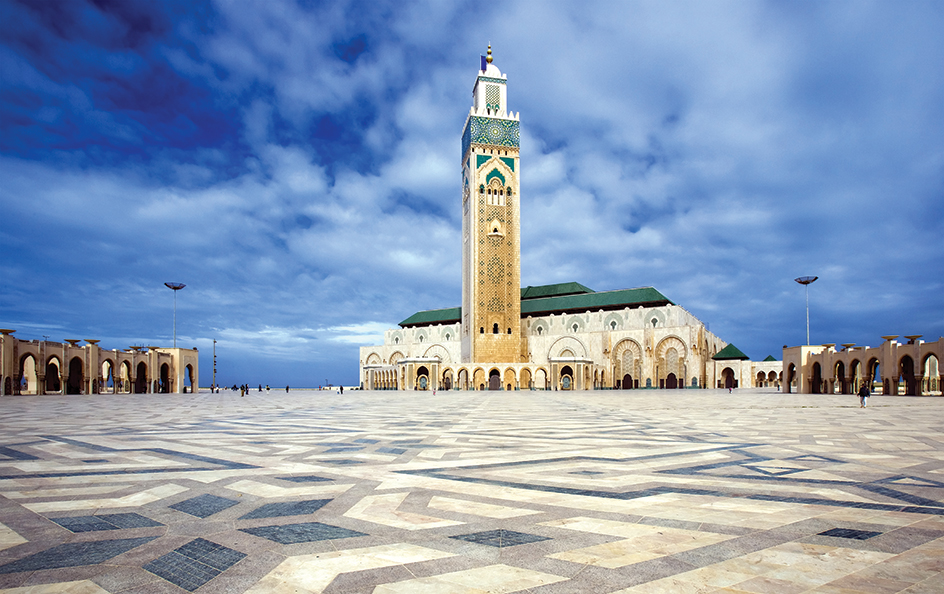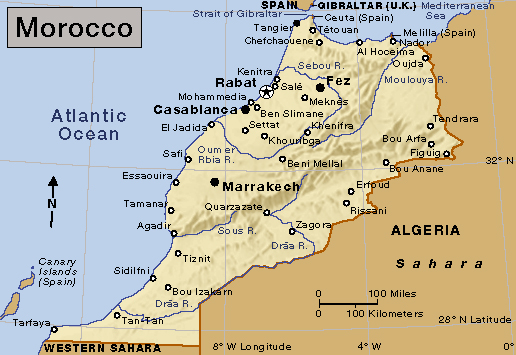Casablanca << `kas` uh BLANG kuh or KAH suh BLAHNK kuh >> (pop. 3,357,173) is the largest city in Morocco and a major port in North Africa. It is Morocco’s chief center of trade, banking and finance, and manufacturing. Phosphate exporting is one of the city’s most important economic activities. Other important industries include food processing, textile manufacturing, leather production, and tourism. Spanish merchants named the city Casa Blanca (Spanish for white house) because of the whitewash used on its houses. The name later became Casablanca.

Casablanca has a modern business section with shops and tall buildings. The city’s oldest section is the Old Medina. Casablanca developed around this small, crowded neighborhood. The New Medina, a second densely populated area, was built in the 1920’s to house the city’s growing population. Many poor people live in shacks on the outskirts of the city. Casablanca also has suburban communities with large homes and modern apartment buildings.
The Portuguese founded Casablanca on the site of a small fishing village in 1575. The town was rebuilt after an earthquake in 1755. Casablanca was the site of a meeting between U.S. President Franklin D. Roosevelt and British Prime Minister Winston Churchill in January 1943. The two leaders met there to decide the course of World War II.

